

 No, organic-biodynamic-natural is not at all like “in the old days”
No, organic-biodynamic-natural is not at all like “in the old days”
We often hear people say that organic (biodynamic, “natural”) wine growers work the way farmers did in the past. And that’s true in some ways. Synthetic pesticides – banned for the organic growers – have not always existed. However, crops have always been in need of protection from diseases and pests.
In the olden times products like lead and arsenic (these two together made an effective insecticide), mercury and nicotine and other substances were used. There are certainly “natural” (a very trendy wine word these days). But they hardly harmless all the same. To say that organic-biodynamic-“natural” wine growing is like the forefathers did is not quite correct.
And from 1885 huge amounts of copper – a poisonous heavy metal – were sprayed over the vineyards to fight off the new fungus disease, downy mildew. Maybe we shouldn’t glorify too much the olden days.
Spraying with copper is the Achilles heel of organic farming. Currently, there is nothing else that works well against downy mildew for the organic growers. But research is under-way. The limit today is set at 6 kilos of copper per year and per hectare for the organic growers. There is a certain amount of flexibility to use more than 6 kilos in difficult years because the rule is that it is allowed to use a total of 30 kilos over a five year period. One should perhaps add that many producers that are not organic use copper too, so it is not just organic growers that have this issue.
Before January 31, 2019, the EU Commission shall decide whether to maintain this limit, lower it or prohibit copper altogether for organic growers.
A total ban will most certainly not happen. But there is a risk (or possibility, depending on how you see it) that the limit will be lowered to 4 kilograms.
The organic growers argue fervently that 4 kilos will not be enough. Their vines would not manage, they say. On the other hand, research shows that lowering the limit would be a good thing for the environment and the soil. A lower limit might lead to that some growers leave the organic system.
What is most important?
To safeguard and protect the environment? Or to try and make sure that as many growers as possible manage to be organic?
“We” (i.e. all our countries together within the EU) ourselves decide where the limits should be set for organic farming and of course, it is not only environmental considerations that enter into the equation but also commercial and political. Which makes it all much more complicated than we would like it to be. In fact, there is no natural and self-evident definition of what “organic” means; instead it is something that we jointly agree on to help the environment.
These are difficult questions for all wine growers.
Join us in the vineyards this autumn and winter and ask the producers themselves what they think and how they work.
Join us on a wine tour! You can find more information on all our upcoming wine tours further down. (Or you can come on a tour simply because you live great wines and delicious food, and beautiful landscapes. That’s totally OK too.)
Book now!
Britt & Per
PS: Recommend to your friends to read the Brief !
– – – – – –
What’s on at BKWine Tours
Autumn 2018
- Champagne, September 26-30
- Bordeaux, October 10-14
- Douro Valley in Portugal, October 17-21
- South Africa, November 9-19
Winter 2019
- Chile-Argentina, January 20 – February 4, 2019
- South Africa, February 16-24, 2019
- New Zealand, March 11-26, 2019
For more information please contact us on email or on phone (we’re on French time), or go to our wine travel site on www.bkwinetours.com!
We also make custom designed wine tours – on-demand tours for you and a group of friends, for your company (maybe to scout new winegrowers?), for a special event… We can combine winery visits and wine touring with other activities: gastronomic workshops, visit to an oyster farm, truffles hunting, cheese making, and more. More info on the custom designed and bespoke BKWine wine tours and travel here!
Read our book(s)
We have written several wine books, nine at the last count. One of them has been translated to English; the others are (so far) only available in Swedish. This is the one that is available in English: Biodynamic, Organic and Natural Winemaking, Sustainable Viticulture and Viniculture
All our books are on wine, but on different subjects: wines of the Languedoc, wine growing and wine making, the wines of France, Tuscany, Bordeaux, Piedmont, Burgundy, Champagne. Several have won prestigeous prizes and awards. Read more on our wine books.
From the World of Wine
In Brief
In short, news and stuff from the world of wine.
Hail nets are now permitted in France
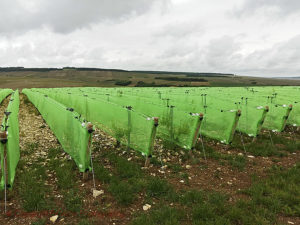 Wine producers in France are now allowed to use vertical hail nets. After three years of experiments in Burgundy, the INAO has decided that the nets do not affect the maturity or quality of the grapes. The background is that in recent year hail has caused extensive damage and lost harvests in several wine regions. However, the nets will cost quite a lot, 20,000 euros per hectare has been mentioned. The question is how many will be tempted to invest in this protection and how the landscape will change. Our guess is that, after all, it will not be so widespread. Perhaps some producers in Chablis and Burgundy will protect their most valuable vineyards. Mendoza in Argentina is regularly hit by hailstorms and has been using hail nets for protection for a long time. Read more: reussir.fr
Wine producers in France are now allowed to use vertical hail nets. After three years of experiments in Burgundy, the INAO has decided that the nets do not affect the maturity or quality of the grapes. The background is that in recent year hail has caused extensive damage and lost harvests in several wine regions. However, the nets will cost quite a lot, 20,000 euros per hectare has been mentioned. The question is how many will be tempted to invest in this protection and how the landscape will change. Our guess is that, after all, it will not be so widespread. Perhaps some producers in Chablis and Burgundy will protect their most valuable vineyards. Mendoza in Argentina is regularly hit by hailstorms and has been using hail nets for protection for a long time. Read more: reussir.fr
Finally, it rains in South Africa
It’s winter in South Africa and it’s raining, at last. A relief, but more rain is needed, says DP Burger, winemaker at Glenwood in Franschhoek, and others we have heard from. The draught in Western Cape, where the wine regions are, have long been a serious problem, but the situation is now improving. The water shortage has led to strict rules on how water, including municipal, can be used. The harvest 2018 became unusually small for most growers. Wine prices are likely to rise, which is not necessarily negative. The world has been paying too little for South African wines for too long. The quality has been constantly improving and prices have not always kept pace.
Join us on our tour to South Africa in February 2019 and discover some of the treasures in this beautiful country! More info here on the wine tour to South Africa.
Fredholms Vingård (Winery) in Scania winse the Great Gold Medal in Rioja
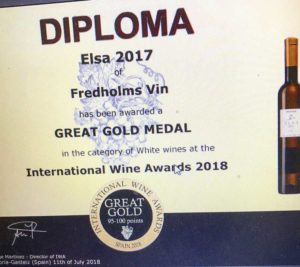 The Swedish vineyard Fredholms Vingård has won a medal in a wine competition in Rioja, the International Wine Awards Spain 2018. And not just any medal but a Great Gold Medal. We say a big congratulations! The award-winning wine is ELSA 2017 and is a white wine made from the solaris grape. Solaris is sometimes considered to be a vitis vinifera grape and is sometimes considered to be a hybrid. It is common in northern Europe. “More than 2500 wines participated in the competition,” says Pär Fredholm, “and only 4 white wines were awarded a Great Gold.” Fredholms Vingård is located in Tyringe, Skåne (Scania) in southern Sweden, and is run by Pär and Jenny Fredholm. They have a little more than 850 vines (!). Besides ELSA they make two more white wines and a rose. Read more: fredholmsvin.se.
The Swedish vineyard Fredholms Vingård has won a medal in a wine competition in Rioja, the International Wine Awards Spain 2018. And not just any medal but a Great Gold Medal. We say a big congratulations! The award-winning wine is ELSA 2017 and is a white wine made from the solaris grape. Solaris is sometimes considered to be a vitis vinifera grape and is sometimes considered to be a hybrid. It is common in northern Europe. “More than 2500 wines participated in the competition,” says Pär Fredholm, “and only 4 white wines were awarded a Great Gold.” Fredholms Vingård is located in Tyringe, Skåne (Scania) in southern Sweden, and is run by Pär and Jenny Fredholm. They have a little more than 850 vines (!). Besides ELSA they make two more white wines and a rose. Read more: fredholmsvin.se.
The most popular grape varieties in Italy
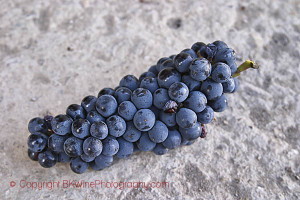 Few wine countries, if any, can compete with Italy in terms of the number of grapes used for wines. The ten most planted grapes account for only 38% of the total plantings. In France the top-ten account for 70% and in Spain 75%. “Other grapes” are thus planted on and extraordinary 62% of the total vineyard plantings in Italy of 682,000 hectares (the world’s 4th biggest plantings). Sangiovese and Montepulciano are decreasing, while Glera (used for the incredibly popular prosecco) and Pinot Gris both show strong increasing trends. We can expect even more Prosecco in the future.
Few wine countries, if any, can compete with Italy in terms of the number of grapes used for wines. The ten most planted grapes account for only 38% of the total plantings. In France the top-ten account for 70% and in Spain 75%. “Other grapes” are thus planted on and extraordinary 62% of the total vineyard plantings in Italy of 682,000 hectares (the world’s 4th biggest plantings). Sangiovese and Montepulciano are decreasing, while Glera (used for the incredibly popular prosecco) and Pinot Gris both show strong increasing trends. We can expect even more Prosecco in the future.
The 10 most planted grape varieties in Italy (in hectares):
- Sangiovese, 54,000, 7,9 % of the total
- Montepulciano, 27,000, 4,0 %
- Glera, 27,000, 4,0 %
- Pinot Gris, 25,000, 3,7 %
- Merlot, 24,000, 3,5 %
- Italia, 22,000, 3,2 % (table grape)
- Catarratto Bianco, 21,000, 3,1 %
- Trebbiano Toscano /Ugni Blanc, 21000, 3,1 %
- Chardonnay, 20,000, 2,9 %
- Barbera, 18,000, 2,6 %
Source: oiv.int
Italians do not want Nero d’Avola from Australia
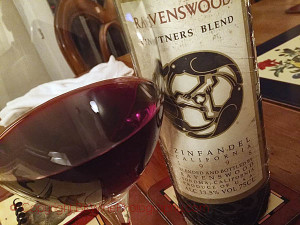 Some wine regions and even individual wine producers are incredibly keen, sometimes excessively so, to protect their names and brands. Champagne is the undisputed world champion in this sport. The most recent discussion in this topic is between Italy and Australia. The conflict is about whether the Australians should be able or not to put the grape name Nero d’Avola on the label. The grape originates from Sicily and came to Australia just over ten years ago. It is a well-known fact that grape varieties spread across the world to the point that e.g. many French grapes are no longer called French but international. It’s hard to agree with Italy. So how can Italians prevent others from using an Italian grape and putting the name on the label? For example, it has become popular to put Zinfandel (an American grape name) on the label of wines made in southern Italy from the grape Primitivo (the Italian grape name). Where’s the logic? Read more about the Nero d’Avola discussion between Italy and Australia here: meininger.de
Some wine regions and even individual wine producers are incredibly keen, sometimes excessively so, to protect their names and brands. Champagne is the undisputed world champion in this sport. The most recent discussion in this topic is between Italy and Australia. The conflict is about whether the Australians should be able or not to put the grape name Nero d’Avola on the label. The grape originates from Sicily and came to Australia just over ten years ago. It is a well-known fact that grape varieties spread across the world to the point that e.g. many French grapes are no longer called French but international. It’s hard to agree with Italy. So how can Italians prevent others from using an Italian grape and putting the name on the label? For example, it has become popular to put Zinfandel (an American grape name) on the label of wines made in southern Italy from the grape Primitivo (the Italian grape name). Where’s the logic? Read more about the Nero d’Avola discussion between Italy and Australia here: meininger.de
Provence, a pink success story
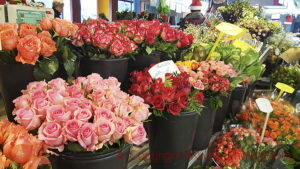 The world drinks more rosé wine than ever before. Rosé consumption in the world has risen by 31% since 2003. The very light coloured style of rosé, such as they are made in Provence, is the highest fashion. The rosé trend has made Provence an extremely successful wine region. 89% of the wines in Provence are today rosé. You can make amazing red wines here but the market forces rule and who can blame the producers? (But it is a bit of a pity that we see fewer and fewer of the delicious reds and whites, and more neutral pool rosés.) In 2008, 59,000 hectolitres of rosé wine from Provence were exported at a value of 2.56 million euros. In 2017, the volume had increased to 382,000 hectolitres and the value to 226 million euros. The US market has grown at an amazing pace. From a value of 2.8 million euros in 2008 to 114 million euros in 2017. A staggering increase. Where will this end? Read more: vinsdeprovence.com
The world drinks more rosé wine than ever before. Rosé consumption in the world has risen by 31% since 2003. The very light coloured style of rosé, such as they are made in Provence, is the highest fashion. The rosé trend has made Provence an extremely successful wine region. 89% of the wines in Provence are today rosé. You can make amazing red wines here but the market forces rule and who can blame the producers? (But it is a bit of a pity that we see fewer and fewer of the delicious reds and whites, and more neutral pool rosés.) In 2008, 59,000 hectolitres of rosé wine from Provence were exported at a value of 2.56 million euros. In 2017, the volume had increased to 382,000 hectolitres and the value to 226 million euros. The US market has grown at an amazing pace. From a value of 2.8 million euros in 2008 to 114 million euros in 2017. A staggering increase. Where will this end? Read more: vinsdeprovence.com
New techniques for cork oaks in Portugal
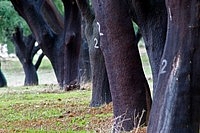 Portugal’s (and the world’s) largest producer of cork products, Amorim, is slowly changing the cork industry. Since 2013, a project has been in progress concerning the possibility to start harvesting the cork from the cork oaks earlier than at the age of 25, as is the case today. The solution seems to be an improved irrigation system. Amorim believes that by using this irrigation technology it will be possible to harvest the cork tree – pulling off the bark – for a first harvest when the tree is only eight years old. Today, you can start harvesting the bark when the tree is 25 years old and after that every nine years. But it’s only at the third harvest, at the age of 43, that the cork is good enough to be used for wine bottles. Speeding this up will make a significant difference. Read more: amorim.com
Portugal’s (and the world’s) largest producer of cork products, Amorim, is slowly changing the cork industry. Since 2013, a project has been in progress concerning the possibility to start harvesting the cork from the cork oaks earlier than at the age of 25, as is the case today. The solution seems to be an improved irrigation system. Amorim believes that by using this irrigation technology it will be possible to harvest the cork tree – pulling off the bark – for a first harvest when the tree is only eight years old. Today, you can start harvesting the bark when the tree is 25 years old and after that every nine years. But it’s only at the third harvest, at the age of 43, that the cork is good enough to be used for wine bottles. Speeding this up will make a significant difference. Read more: amorim.com
Greek and Italian grapes in Languedoc
 It gets warmer and drier in Languedoc, says Christophe Bousquet at Domaine Pech Redon in La Clape. This cannot completely be compensated for by irrigation. That’s why Christophe this summer is going to plant grape varieties that are used to an even warmer climate. He has chosen Nero d’Avola (!) from Sicily and the amazing white grape Assyrtiko from Greece. We’ll have to be patient for a few years before these grapes are available as wine in a bottle. But we know Christophe’s wines very well and we have the feeling that he will make really good wines out of these two grapes. Nero d’Avola and Assyrtiko cannot be used for an appellation (AOP) wine but they are allowed to be planted in France and can be sold as vin de france. Read more about new grapes in Languedoc: larvf.com
It gets warmer and drier in Languedoc, says Christophe Bousquet at Domaine Pech Redon in La Clape. This cannot completely be compensated for by irrigation. That’s why Christophe this summer is going to plant grape varieties that are used to an even warmer climate. He has chosen Nero d’Avola (!) from Sicily and the amazing white grape Assyrtiko from Greece. We’ll have to be patient for a few years before these grapes are available as wine in a bottle. But we know Christophe’s wines very well and we have the feeling that he will make really good wines out of these two grapes. Nero d’Avola and Assyrtiko cannot be used for an appellation (AOP) wine but they are allowed to be planted in France and can be sold as vin de france. Read more about new grapes in Languedoc: larvf.com
Features
Features that we have published during the past month, with lots of reading for you.
Assessing wine quality and the ageing potential of a wine; the pursuit of the perfectly mature wine
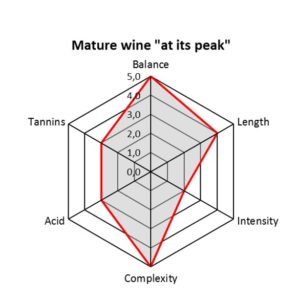 “Taste is by definition subjective, but that should not hinder us from using a more objective approach when discussing wine and winnings. What we tend to like varies. Some prefer to drink wine with a lot of maturation tones, others to drink wine young. And in addition, there is a whole spectrum of taste preferences that run in every possible direction. A neutral score sheet for how a “good wine” should taste does not exist and what is considered extraordinary today by wine critics and other stakeholders may well be looked upon quite differently in the future, depending on trends and changing perceptions.”
“Taste is by definition subjective, but that should not hinder us from using a more objective approach when discussing wine and winnings. What we tend to like varies. Some prefer to drink wine with a lot of maturation tones, others to drink wine young. And in addition, there is a whole spectrum of taste preferences that run in every possible direction. A neutral score sheet for how a “good wine” should taste does not exist and what is considered extraordinary today by wine critics and other stakeholders may well be looked upon quite differently in the future, depending on trends and changing perceptions.”
Read Mattias Schyberg’s unusually scientific reasoning on BKWine Magazine: Assessing wine quality and the ageing potential of a wine; the pursuit of the perfectly mature wine.
Top champagne Penet Chardonnet should be enjoyed as wines, not just bubbly | Britt on Forbes
 “A lot of champagnes are drunk at occasions when all that matters are the bubbles. But if you open a high quality champagne with a strong character it deserves more attention. It should actually be drunk as a “normal” wine. And why not with food? When you meet Alexandre Penet at Champagne Penet-Chardonnet in Verzy he often stresses these facts: that champagne is a wine and that his champagnes are delicious with food. They are complex, very dry – always at least extra brut – and with an amazing length and depth.”
“A lot of champagnes are drunk at occasions when all that matters are the bubbles. But if you open a high quality champagne with a strong character it deserves more attention. It should actually be drunk as a “normal” wine. And why not with food? When you meet Alexandre Penet at Champagne Penet-Chardonnet in Verzy he often stresses these facts: that champagne is a wine and that his champagnes are delicious with food. They are complex, very dry – always at least extra brut – and with an amazing length and depth.”
Read more on Britt’s article on one of the top “grower champagnes” on BKWine Magazine, originally published on Forbes: Top champagne Penet Chardonnet should be enjoyed as wines, not just bubbly | Britt on Forbes.
The Mouton Mystery: Chateau Mouton-Rothschild 1945, fake or real?
 “Broadbent described Mouton 1945 as ‘a Churchill of a wine’, and not just in reference to the wine itself, either. An Art Deco label was commissioned from the poster artist Carlu for the 1924 Mouton vintage. To commemorate the end of the war, 1945 was the second vintage of Mouton to feature a bespoke label, based on British Prime Minister Winston Churchill’s ‘V for Victory’, by a young French artist called Philippe Jullian. Every vintage since, Mouton has enlisted an artist to design a new label. Although the artists are never paid for their work, they do receive ten cases of wine – five of that year’s vintage, plus five of their own vintage year.”
“Broadbent described Mouton 1945 as ‘a Churchill of a wine’, and not just in reference to the wine itself, either. An Art Deco label was commissioned from the poster artist Carlu for the 1924 Mouton vintage. To commemorate the end of the war, 1945 was the second vintage of Mouton to feature a bespoke label, based on British Prime Minister Winston Churchill’s ‘V for Victory’, by a young French artist called Philippe Jullian. Every vintage since, Mouton has enlisted an artist to design a new label. Although the artists are never paid for their work, they do receive ten cases of wine – five of that year’s vintage, plus five of their own vintage year.”
A purchase of a special wine from the cellar of a special house with special owners, a story told by BKWine Magazine guest writer Stuart George: The Mouton Mystery: Chateau Mouton-Rothschild 1945, fake or real?
Join us this fall on the wine tour to Bordeaux!
And if you happen to read Swedish you can get our award-winning book on Bordeaux and its wines.
Challenging Chianti: Morellino di Scansano in Maremma makes some great Tuscan wines too | Britt on Forbes
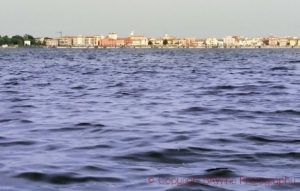 Morellino di Scansano in the coastal region of Maremma in Tuscany is a new challenger to the classic Chianti wines, and is a descendant of the Super Tuscans. An added bonus for the vinous traveller is that it is also has a beautiful coast with charming Italian villages. Maremma was quite unknown as a wine region 40 years ago. Then Sassicaia emerged in Bolgheri, a little further north in Maremma, with its first vintage in 1968. Bolgheri gained cult status and a new word, Super Tuscan, was born. Wine producers from more famous parts of Tuscany and Italy discovered Maremma. Here they could buy vineyards cheaper than in for instance Chianti. A new era had started for the pretty coastal region.
Morellino di Scansano in the coastal region of Maremma in Tuscany is a new challenger to the classic Chianti wines, and is a descendant of the Super Tuscans. An added bonus for the vinous traveller is that it is also has a beautiful coast with charming Italian villages. Maremma was quite unknown as a wine region 40 years ago. Then Sassicaia emerged in Bolgheri, a little further north in Maremma, with its first vintage in 1968. Bolgheri gained cult status and a new word, Super Tuscan, was born. Wine producers from more famous parts of Tuscany and Italy discovered Maremma. Here they could buy vineyards cheaper than in for instance Chianti. A new era had started for the pretty coastal region.
Read more on Britt’s article on BKWine Magazine, originally published on Forbes: Unknown Tuscany: Great Wines And A Beautiful Coast In Morellino Di Scansano, Maremma.
Fattoria Bini, a historic wine estate near Florence in Tuscany | Britt on Forbes
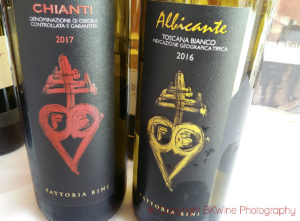 Visualize a villa from the early 16th century, near Florence; build by an enemy of the mighty Medici family. You can easily imagine intrigues of various kinds taking place here. Today, life at the Terraio Villa is probably much quieter. The passion is still there but now it goes into the excellent wines made here. The wine estate surrounding the villa is called Fattoria Bini. Mariano Bini bought the villa and the farm around 200 years ago and created Fattoria Bini. His heirs, Elena and Francesca Bini, still live in the beautiful villa, situated 20 kilometres southwest of Florence, amidst 20 hectares of vineyards, and olive groves.
Visualize a villa from the early 16th century, near Florence; build by an enemy of the mighty Medici family. You can easily imagine intrigues of various kinds taking place here. Today, life at the Terraio Villa is probably much quieter. The passion is still there but now it goes into the excellent wines made here. The wine estate surrounding the villa is called Fattoria Bini. Mariano Bini bought the villa and the farm around 200 years ago and created Fattoria Bini. His heirs, Elena and Francesca Bini, still live in the beautiful villa, situated 20 kilometres southwest of Florence, amidst 20 hectares of vineyards, and olive groves.
Read more on Britt’s article on BKWine Magazine, originally published on Forbes: Fattoria Bini: A Florentine Wine Estate With An Intriguing History.
Wine tours
Some information about current and future wine tours with BKWine.
Bordeaux: chateaux, wines and a long history | wine tour
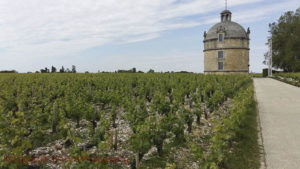 Seeing all the well-known Bordeaux chateaux in real life is a great experience. Some of them are very impressive. However, some of the most famous ones, like Château Petrus or Chateau Mouton-Rothschild, are small and not so imposing but when you know the price of the wines you are a bit impressed anyway. Many chateaux were built in the 18th and 19th century with the beautiful light coloured sandstone extracted from quarries in the region. Many chateaux in Saint Emilion use them as underground cellars today. The history is always very present in Bordeaux which adds a dimension to the visits and the wine tastings. And, of course, to the lovely lunches at some of the most beautiful chateaux in Médoc, Saint Emilion and Graves. Join us in Bordeaux on this fabulous tour.
Seeing all the well-known Bordeaux chateaux in real life is a great experience. Some of them are very impressive. However, some of the most famous ones, like Château Petrus or Chateau Mouton-Rothschild, are small and not so imposing but when you know the price of the wines you are a bit impressed anyway. Many chateaux were built in the 18th and 19th century with the beautiful light coloured sandstone extracted from quarries in the region. Many chateaux in Saint Emilion use them as underground cellars today. The history is always very present in Bordeaux which adds a dimension to the visits and the wine tastings. And, of course, to the lovely lunches at some of the most beautiful chateaux in Médoc, Saint Emilion and Graves. Join us in Bordeaux on this fabulous tour.
Read more about the Bordeaux wine tour 10-14 October 2018.
Reaching the highest levels in South America: wines, food and the Andes | wine tour
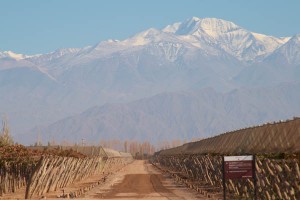 It is hard to say which part of our South America tour is the most memorable. The wine tastings, the winemakers, the landscape or the food. The empanadas, the grilled meat cooked outside over open fire, the young winemakers who talk passionately about their terroir, the top quality icon wines or the spectacular bus journey (wow!) over the mighty Andes. The truth is that everything is memorable. Unforgettable. Not least the days in Buenos Aires with a captivating tango show and a visit to the mythical harbour city of Valparaiso in Chile. This is a wine tour that will give you a life-time memory.
It is hard to say which part of our South America tour is the most memorable. The wine tastings, the winemakers, the landscape or the food. The empanadas, the grilled meat cooked outside over open fire, the young winemakers who talk passionately about their terroir, the top quality icon wines or the spectacular bus journey (wow!) over the mighty Andes. The truth is that everything is memorable. Unforgettable. Not least the days in Buenos Aires with a captivating tango show and a visit to the mythical harbour city of Valparaiso in Chile. This is a wine tour that will give you a life-time memory.
Read more on our next tour to South America: Unforgettable Chile and Argentina, 20 January – 3 February 2019.
Meet the pioneers in wine in South Africa | wine tour
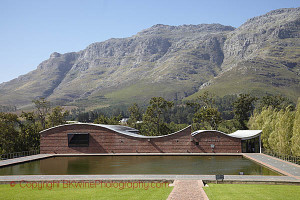 South Africa has changed a lot since in 25 years. Not least the wine industry. Many people associate South Africa with unpretentious and good-value wines. We will show you the more ambitious wines made here in this wonderful country. Today this country produces true world-class wines. The scenery is unforgettable and beautiful. February is the beginning of harvest time, so this is a very interesting time to visit. We will go to Stellenbosch, Franschhoek, Paarl and the spectacular valley of Hemel-en-Aarde on the south coast where our hotel is right at the water’s edge.
South Africa has changed a lot since in 25 years. Not least the wine industry. Many people associate South Africa with unpretentious and good-value wines. We will show you the more ambitious wines made here in this wonderful country. Today this country produces true world-class wines. The scenery is unforgettable and beautiful. February is the beginning of harvest time, so this is a very interesting time to visit. We will go to Stellenbosch, Franschhoek, Paarl and the spectacular valley of Hemel-en-Aarde on the south coast where our hotel is right at the water’s edge.
We start with a few days in Cape Town. You cannot go to South Africa without visiting the Table Mountain and the Cape Town Waterfront.
Read more on our wine tour “the exciting and beautiful South Africa”, 16-24 February 2019.
Be one of the first to discover the greatness of New Zealand | wine tour
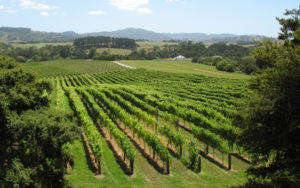 It is a long journey to get to New Zealand but it is well worth it. Here you will enjoy the wines and the food, but also the nature and the landscape that is completely unique, famous for instance from the filming of Lord of the Rings. Our tour starts in Auckland on the North Island and finishes in Queenstown on the South Island. We will make several stops along the way of course, in the capital Wellington, in Christchurch and in Marlborough, Hawke’s Bay, Martinborough and several other wine regions. A true road trip across the country that will show you the best of the wine, the food and the landscape.
It is a long journey to get to New Zealand but it is well worth it. Here you will enjoy the wines and the food, but also the nature and the landscape that is completely unique, famous for instance from the filming of Lord of the Rings. Our tour starts in Auckland on the North Island and finishes in Queenstown on the South Island. We will make several stops along the way of course, in the capital Wellington, in Christchurch and in Marlborough, Hawke’s Bay, Martinborough and several other wine regions. A true road trip across the country that will show you the best of the wine, the food and the landscape.
Our tour in March 2019 is already fully booked but we plan a second one in November 2019. That means that it is springtime here! More info will follow soon on our website but please contact us already if you are interested.
More info on the March wine tour to New Zealand here, the November tour will have a very similar program.
Don’t be an egoist! Share with your friends and other wine enthusiasts! Forward the Brief to your friends! Suggest that they sign up for a free subscription !
© Copyright BKWine







